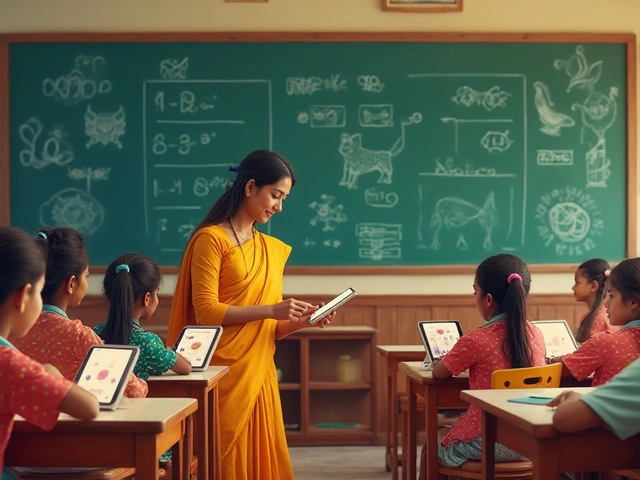Blended Learning: What It Is and How It’s Changing Education in India
When we talk about blended learning, a teaching model that mixes face-to-face classroom instruction with online digital learning. Also known as hybrid education, it’s not just watching videos at home and showing up for tests. It’s a structured system where students learn at their own pace online, then use classroom time to dig deeper, ask questions, and work with peers. This isn’t a trend from Silicon Valley—it’s happening right now in coaching centers in Kota, colleges in Bangalore, and even small-town schools across Uttar Pradesh.
Blended learning eLearning, digital education that uses platforms to deliver lessons, quizzes, and feedback is the backbone of this model. You can’t have blended learning without it. But it’s not enough to just throw up a video lecture. The best blended systems track progress, adapt content based on how students perform, and give teachers real-time data on who’s falling behind. That’s why schools using blended learning see better results—not because they’re using tech, but because they’re using it smarter.
And it’s not replacing the traditional classroom, the physical space where teachers guide students through lessons, discussions, and hands-on activities. It’s enhancing it. In a blended setup, a teacher might assign a short online module on quadratic equations for homework. Then, in class, they spend time solving tricky problems together, helping students who struggled with the video, and running group activities. The classroom becomes a place for application, not just explanation.
What makes blended learning powerful is flexibility. A student preparing for JEE can review physics concepts late at night, pause and rewind tough explanations, and then walk into class ready to tackle problems with a tutor who already knows where they’re stuck. Someone learning English can practice speaking with an app every morning and join a live conversation group on weekends. It works for busy parents, working professionals, and teens juggling school and coaching.
But it’s not magic. The biggest failure isn’t bad tech—it’s poor planning. Schools that just add a few videos to their syllabus without changing how they teach end up with frustrated students and tired teachers. The real shift is in roles: teachers become guides, not lecturers. Students become active learners, not passive listeners. And the system? It becomes responsive—adjusting to how each person learns.
You’ll find examples of this in the posts below. Some show how coaching centers in India are using blended learning to improve JEE results. Others break down how online platforms are making education cheaper and more accessible. You’ll see how CBSE schools are testing hybrid models, and how students are using free tools to fill gaps in their learning. There’s no one-size-fits-all approach here. What works for a student in Delhi might not work for one in Assam. But the core idea stays the same: mix the best of both worlds, and let the learner lead.
5 Most Effective eLearning Models Explained: A Complete Guide
Posted by Aria Fenwick On 25 Jul, 2025 Comments (0)

Explore the five key eLearning models, with real examples and practical tips to find what works for students and educators in today's digital world.
eLearning Types: The Three Essentials Everyone Should Know
Posted by Aria Fenwick On 5 May, 2025 Comments (0)

This article breaks down the three main types of eLearning, making it easy for anyone to understand the options out there. You'll get real tips on how each type works and their pros and cons, so you can decide what fits your needs. The guide covers self-paced courses, instructor-led virtual classrooms, and blended learning. It highlights practical examples for real-life use, from workplace training to school. No jargon, just clear, direct advice on picking the best eLearning platform for your goals.




